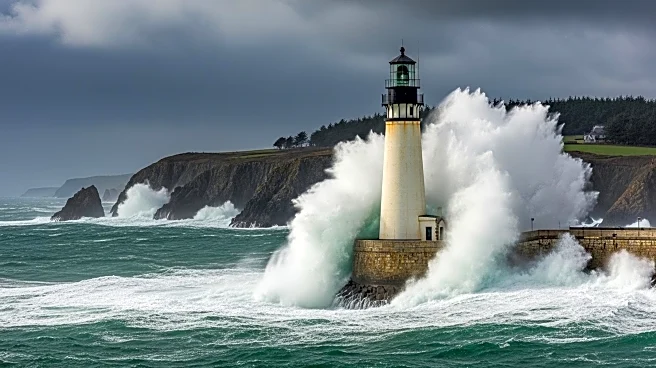What's Happening?
A powerful nor'easter has struck the East Coast of the United States, bringing heavy rain and strong winds to the region. This weather event has caused significant disruptions, including flooding threats and damage to infrastructure. Concurrently, Alaska is experiencing the aftermath of a typhoon, which has left people stranded in remote villages. The U.S. Coast Guard has been actively involved in rescue operations, using helicopters to hoist individuals to safety. These severe weather conditions are impacting daily life and posing challenges to emergency services across both regions.
Why It's Important?
The impact of these weather events is significant, as they affect large populations and critical infrastructure. The nor'easter on the East Coast threatens homes, businesses, and transportation systems, potentially leading to economic losses and safety hazards. In Alaska, the typhoon remnants have isolated communities, necessitating urgent rescue efforts and highlighting the vulnerability of remote areas to extreme weather. These events underscore the importance of preparedness and response strategies in mitigating the effects of natural disasters, which are becoming increasingly frequent and severe due to climate change.
What's Next?
Emergency services are expected to continue their efforts in managing the aftermath of these weather events. On the East Coast, authorities may issue further flood warnings and advisories as the nor'easter progresses. In Alaska, the focus will remain on ensuring the safety and well-being of those affected by the typhoon remnants. Long-term, these events may prompt discussions on improving infrastructure resilience and emergency response capabilities to better handle future occurrences.
Beyond the Headlines
These weather disruptions may lead to broader discussions on climate change and its role in intensifying natural disasters. The increasing frequency and severity of such events could drive policy changes aimed at enhancing climate resilience and adaptation strategies. Additionally, the economic impact of these disasters may influence future investments in infrastructure and emergency preparedness.













